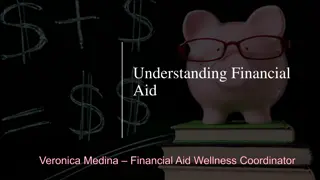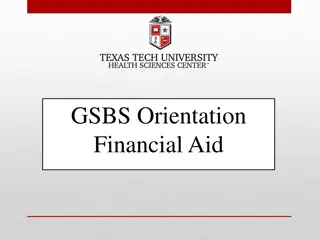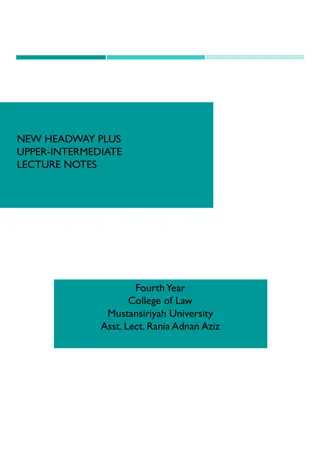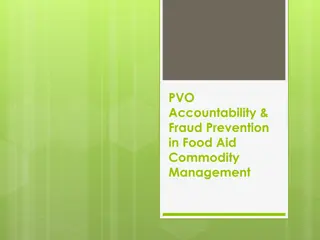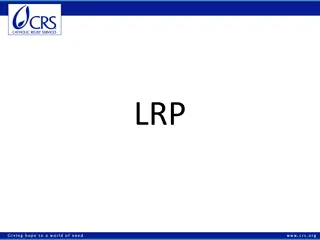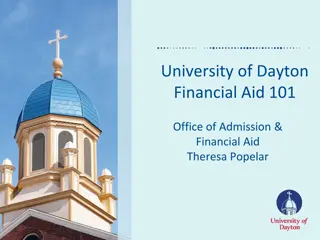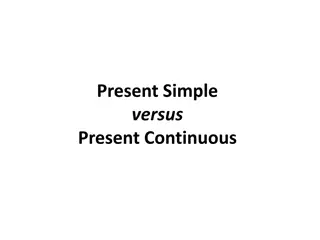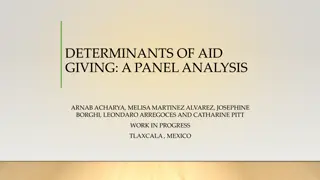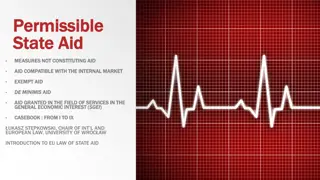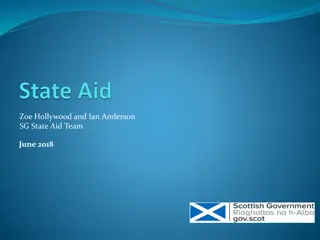Evolution of Food Aid: From PL 480 to Present Realities
Significant changes have occurred in the landscape of food aid for Africa since the enactment of PL 480 in the US in 1954. The evolution includes shifts in government grain stocks, the ineffectiveness of food aid as a tool for trade promotion, and the shift in focus towards humanitarian criteria post-Cold War. Today, food aid primarily responds to emergencies, with a major portion directed to Africa.
Download Presentation

Please find below an Image/Link to download the presentation.
The content on the website is provided AS IS for your information and personal use only. It may not be sold, licensed, or shared on other websites without obtaining consent from the author.If you encounter any issues during the download, it is possible that the publisher has removed the file from their server.
You are allowed to download the files provided on this website for personal or commercial use, subject to the condition that they are used lawfully. All files are the property of their respective owners.
The content on the website is provided AS IS for your information and personal use only. It may not be sold, licensed, or shared on other websites without obtaining consent from the author.
E N D
Presentation Transcript
Food Aid for Africa: Past and Present Chris Barrett October 27, 2010 Guest lecture to History/ASRC 3652 Cornell University
Background Much has changed since modern food aid began with the enactment of PL480 in the US in 1954, even since the 1990 Farm Bill, the last major reform of U.S. food aid. Yet contemporary debates are often derailed by failures to appreciate the significant changes that have occurred.
Background 1954-1990: - Generous farm price supports and gov t held stocks - Large regions outside North American cereals marketshed - Hunger widespread globally initially - Cold War: flowed initially to Asia, Latin America, Europe and north Africa PL 480 was a direct response to these conditions and succeeded in meeting some of the resulting goals, principally commodity surplus disposal. Times have changed.
What Has Changed 1. Price Supports and Gov t Grain Stocks History: Government year-end wheat stocks (Three-year centered moving average) 400 - Gov t stocks (CCC/FOR) down 95% 1987-2005 - Now procure based on IFBs, at a premium - No price impact, yet myth persists b/c people conflate correlation with causality 350 300 Million bushels 250 200 150 100 50 0 1990 1995 2000 2005 Data source: USDA Economic Research Service
What Has Changed 2. Ineffective Tool for Trade Promotion: - Trade promotion hypothesis in 1950s that food aid today stimulates commercial agricultural exports in the future. Proved incorrect. - Not only fails to grow donor exports, disrupts markets at margin, esp. 3rd party commercial agricultural exports. Hence food aid becoming a big issue in the WTO Doha Round. - Trade disrupting effect is most serious for the least well targeted food aid (program and monetized project). - Because the poor depend heavily on markets for food, policies that disrupt markets undermine food security, not just trade.
What Has Changed 3. The Cold War Is Over : - - Diplomatic challenges now quite different. Beyond fulfilling human rights (1948 Universal Declaration of Human Rights and 1966 International Covenant on Economic, Social and Cultural Rights), no evidence it works. Top 5 1960 recipients: India, Poland, Egypt, Pakistan, Brazil Top 5 2009 recipients: Ethiopia, Sudan, Somalia, North Korea, Kenya Primary criteria now are humanitarian: most food aid flows in response to emergencies (75% in 2009) and >2/3 now goes to Africa - -
What Has Changed 4. Shift From Program to Emergency Food Aid: - Until mid-1990s, most food aid was program govt-to-govt concessional sales on credit - Now mainly to NGOs and WFP for emergency response (75% now emergency, 21% project, <5% program) - Goes hand-in-hand with geographic shift to Africa
What Has Changed 5. Relief Traps and Reduced Cash Resources for Devt: - Insufficient resources for non-emergency development programming makes it difficult to prevent new emergencies and to limit their adverse impact when they do occur. - Insufficient cash resources to meet needs: distorts NGO behavior nonemergency food aid monetization is the result Approved Monetization Rates 70 % Title II non-emergency food aid 1990-91 avg=10.4% 2001-4 avg= 60.1% 60 50 shipments 40 30 20 10 0 1990 1991 1992 1993 1994 1995 1996 1997 1998 1999 2000 2001 2002 2003 2004 2005
What Has Changed 6. Rise of Untied Food Aid: - Cash now common instead of commodities and recipients can source from anywhere, local and regional procurement - Now down to half of food aid shipped from donor country (almost entirely US). 1/3 now bought in developing countries. 60% of LRP done in Africa in 2009.
What Has Changed 6. Rise of Untied Food Aid: - Cash now common instead of commodities and recipients can source from anywhere, local and regional procurement - Now down to half of food aid shipped from donor country (almost entirely US). 1/3 now bought in developing countries. 60% of LRP done in Africa in 2009.
What Has Changed 7. Growing Pressure for Flexibility in Food Aid: Food aid flows have been steadily falling (14 to 5.7 MMT, 1988-2009), now at lowest level in 50 years. Food insecurity largely unchanged worldwide, growing in poorest areas Donors and operational agencies increasingly exploring cash transfers, esp. post-tsunami Food aid increasingly procured locally/regionally - ~2/3 of non-US food aid now through LRP Result: Both demand and supply side pressures for increased flexibility in FA programming. Shift to food assistance .
What Still Needs To Change? 1. Golden Hour Principle and Untying of US Food Aid: - Golden Hour principle: rapid response essential - Delays are expensive and deadly (2004-5 Niger example). - Untie US food aid procurement t0 permit LRP for faster response (139 days median delivery time for US emergency food aid)
What Still Needs To Change? 2. Alternative Means of Supporting US Merchant Marine: - 1954 Cargo Preference Act to support merchant marine for national security purposes share increased 50-75% in 1985 Impact: higher freight costs. $140 mn to taxpayers FY2006 equivalent to entire non-emergency food aid to Africa that served 1.2 million people! Yes, 70% of cargo preference vessels are not military useful, a large share are ultimately owned by foreign corporations and we have never mobilized vessel crews for national defense, although support is ~$100K/yr per mariner! Maritime Security Program (1996) offers a much better means of supporting US merchant marine -- provides $2.9 mn/ship-year w/some legal double dipping (CP and MSP) - - -
What Still Needs To Change? 3. Improved Response Analysis and Targeting: - With newfound flexibility, operational agencies need more systematic approaches to determining the best means of responding to a given food insecurity context. (MIFIRA) - Some of the biggest problems arise from the difficulty of effective targeting of who needs what and when.
What Still Needs To Change? 4. Viable Food Aid Governance: - Food Aid Convention and FAO/CSSD ineffective need to revise membership, accounting and adopt codes of conduct - Informal renegotiation now underway, to formally begin in December. Canada chairing the FAC now. - Revise Food Aid Convention accounting methods to reward timely deliveries and nutritional quality. - Balance cash and food commitments so as not to saddle recipient countries with global food price risk.
Conclusion Much has changed need for further reforms since the environment is now so different. Food aid remains an important policy instrument, but for markedly different reasons than in mid- 1950s, even than in 1990, when last seriously revisited in Farm Bill debates. Improving awareness of changed landscape will help build the coalitions necessary for further change.
Thank you for your time, attention and comments! For background history, see Christopher B. Barrett and Daniel G. Maxwell, Food Aid After Fifty Years: Recasting Its Role (London: Routledge, 2005)



